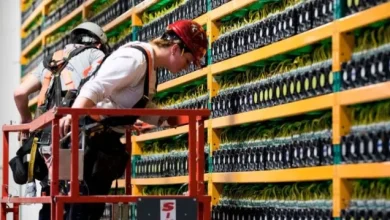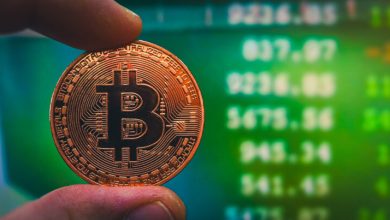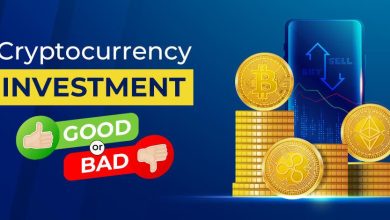Blockchain Beyond Bitcoin: Applications Across Various Sectors
Blockchain innovation, initially contrived to help Bitcoin and other cryptographic forms of money, has since advanced a long ways past its underlying foundations in computerized cash. While the vast majority actually partner blockchain with Bitcoin, the innovation’s potential applications reach out to various ventures, promising to upset areas like money, medical services, inventory network the executives, land, and even administration. With its decentralized, secure, straightforward, and changeless nature, blockchain offers inventive answers for large numbers of the difficulties that ventures face today.
This article digs into the quintessence of blockchain innovation, investigates its center elements, and features its applications across different areas, showing how blockchain is changing businesses past Bitcoin.
1. Figuring out Blockchain Innovation
Blockchain is a dispersed record innovation (DLT) that empowers secure, straightforward, and unchanging recording of exchanges. The record is decentralized, meaning it isn’t constrained by any single substance or association. All things being equal, the data is shared across an organization of PCs (called hubs), every one of which holds a duplicate of the blockchain. This framework guarantees that all exchanges are confirmed by agreement among the hubs, making the blockchain impervious to altering or hacking.
Each block in the blockchain contains a few exchanges. When confirmed, the block is added to the chain of past exchanges (thus the expression “blockchain”). This chain is super durable and can’t be modified without the agreement of most of the organization, guaranteeing the respectability of the information.
The characterizing elements of blockchain include:
Decentralization: No focal authority administers the blockchain, appropriating control among all members.
Straightforwardness: Exchanges are apparent to all members, guaranteeing trust in the framework.
Changelessness: Whenever information is added to the blockchain, it can’t be modified, guaranteeing the exactness of records.
Security: Blockchain utilizes progressed cryptography to get exchanges, making it profoundly impervious to misrepresentation and cyberattacks.
Presently, how about we investigate how blockchain’s interesting elements are being applied across different enterprises past cryptographic money.
2. Blockchain in Money and Banking
While blockchain’s most popular application is Bitcoin, its effect on the more extensive monetary area is maybe quite possibly of its most encouraging commitment.
a) Cross-Boundary Installments
Conventional cross-line installments are frequently sluggish, costly, and include various go-betweens, each taking a cut. Blockchain innovation works on this interaction by permitting distributed (P2P) exchanges without the requirement for agents like banks or installment processors. Swell, a blockchain-based installment convention, empowers quick and minimal expense cross-line exchanges by utilizing its local digital currency, XRP, to settle installments continuously. Blockchain’s proficiency and cost-adequacy in cross-line installments could save billions of dollars every year for organizations and people the same.
b) Savvy Agreements and Decentralized Money (DeFi)
Blockchain’s capacity to help brilliant agreements has brought about decentralized finance (DeFi). A shrewd agreement is a self-executing contract where the details of the understanding are straightforwardly composed into code. These agreements consequently execute when the predefined conditions are met, dispensing with the requirement for middle people like banks or legal advisors.
DeFi stages, principally based on Ethereum, offer many monetary administrations — like loaning, acquiring, and exchanging — without depending on conventional monetary establishments. These stages have acquired ubiquity because of their capacity to give open, permissionless admittance to monetary administrations for anybody with a web association, disturbing conventional financial models.
c) Tokenization of Resources
Blockchain empowers the tokenization of physical and computerized resources. This implies that resources like land, stocks, or even workmanship can be addressed carefully on a blockchain, making it simpler to exchange and move proprietorship. Tokenized resources can be exchanged every minute of every day, considering expanded liquidity in business sectors that were customarily illiquid.
3. Blockchain in Production network The board
Blockchain can possibly change production network the board by giving more prominent straightforwardness and discernibility. In a globalized world, supply chains are much of the time complex, including various gatherings and exchanges that can be challenging to follow. Blockchain’s unchanging and straightforward record gives a successful arrangement.
a) Following Merchandise
With blockchain, each move toward the production network can be recorded and confirmed progressively. This permits organizations to follow merchandise from the starting place to the end customer, guaranteeing item legitimacy and lessening the gamble of misrepresentation. For instance, Walmart utilizes blockchain to follow the starting points of food items, upgrading sanitation by permitting the organization to recognize and review polluted things rapidly.
b) Combatting Fake Merchandise
Blockchain can assist with combatting fake merchandise by giving confirmation of genuineness. Extravagance products, drugs, and hardware are in many cases subject to falsifying, costing enterprises billions of dollars yearly. Blockchain empowers makers to make computerized authentications of realness that movement with the item through the inventory network, guaranteeing buyers get veritable items.
c) Supportability and Moral Obtaining
Shoppers are progressively worried about the natural and moral effect of the items they purchase. Blockchain can give straightforwardness into the obtaining of materials, permitting buyers to confirm that items satisfy supportability and moral guidelines. Organizations like Everledger use blockchain to follow the beginning of precious stones, guaranteeing they are without struggle and morally obtained.
4. Blockchain in Medical care
The medical care industry faces various difficulties connected with information security, patient protection, and the fracture of clinical records. Blockchain offers answers for these issues by giving a protected, decentralized, and sealed technique for overseeing medical services information.
a) Secure Clinical Records
Blockchain can be utilized to make a brought together and secure framework for putting away understanding clinical records. At present, clinical records are many times divided across various medical care suppliers, making it challenging for specialists to get to a patient’s full clinical history. Blockchain permits patients to control admittance to their records, conceding authorization to specialists, clinics, or insurance agency on a case by case basis. This further develops information security, improves patient protection, and guarantees that medical care suppliers have precise data to pursue informed choices.
b) Clinical Preliminaries and Exploration
Blockchain can improve straightforwardness and responsibility in clinical preliminaries by keep information and results in a changeless record. This guarantees that preliminary information can’t be modified, diminishing the gamble of misrepresentation and working on the unwavering quality of exploration. Moreover, blockchain can smooth out the sharing of examination information across establishments, speeding up logical advancement and development.
c) Drug Inventory network
Blockchain can likewise be applied to the drug inventory network to battle the issue of fake medications. By following drugs from producer to shopper, blockchain guarantees that main veritable medications arrive at the market, safeguarding patients and saving the trustworthiness of the medical services framework.
5. Blockchain in Land
The land business is generally sluggish, paper-concentrated, and overflowing with shortcomings. Blockchain innovation is resolving these issues by smoothing out exchanges, further developing straightforwardness, and lessening the requirement for middle people.
a) Property Exchanges
Blockchain can improve on land exchanges by permitting purchasers and venders to finish bargains straightforwardly utilizing savvy contracts. These agreements consequently execute once the terms are met, decreasing the requirement for middle people like realtors or escrow administrations. This smoothes out the cycle, brings down exchange expenses, and paces up the time it takes to finish a deal.
b) Title The executives
Blockchain can likewise further develop title the board by making a decentralized, straightforward record of property proprietorship. In many regions of the planet, property titles are likely to debates and misrepresentation. By recording property titles on a blockchain, proprietorship can be confirmed effectively, and the gamble of extortion is essentially decreased.
c) Partial Proprietorship
Blockchain empowers partial responsibility for home, permitting financial backers to trade parts of properties. This opens up new open doors for more modest financial backers who might not have the funding to buy whole properties. Tokenized land takes into account more prominent liquidity and democratizes admittance to the housing market.
6. Blockchain in Government and Administration
States can use blockchain to upgrade straightforwardness, decrease extortion, and work on the effectiveness of public administrations.
a) Casting a ballot Frameworks
Blockchain can be utilized to make secure, straightforward, and sealed casting a ballot frameworks. Conventional democratic frameworks are frequently powerless against misrepresentation, hacking, and elector concealment. Blockchain-based casting a ballot frameworks guarantee that votes are recorded precisely and can’t be changed. Estonia, for instance, has proactively carried out blockchain-based deciding in favor of public races, further developing citizen trust and support.
b) Freely available reports The executives
States oversee huge measures of freely available reports, including birth endorsements, marriage licenses, and expense records. Blockchain can improve on the administration of these records by giving a protected, decentralized data set. Residents can get to their records effectively, and the gamble of report altering or misfortune is altogether decreased.
c) Straightforward Acquisition
Blockchain can likewise be applied to government acquisition cycles to decrease defilement and guarantee straightforwardness. By recording obtainment agreements and offers on a blockchain, the cycle turns out to be more straightforward, decreasing the gamble of bias or pay off in granting contracts.
7. Conclusion: An Innovation Past Bitcoin
While Bitcoin brought blockchain to the bleeding edge, the innovation’s applications stretch out a long ways past cryptographic money. Blockchain can possibly change businesses by improving security, straightforwardness, and proficiency. From money and medical care to inventory network the executives and government, blockchain is ready to alter how we direct business, oversee information, and associate with each other.
As blockchain innovation keeps on developing, its reception across different areas will probably develop, opening additional opportunities and reshaping enterprises in manners that were once impossible. Blockchain is genuinely an extraordinary power, and its effect is simply starting to be understood.


